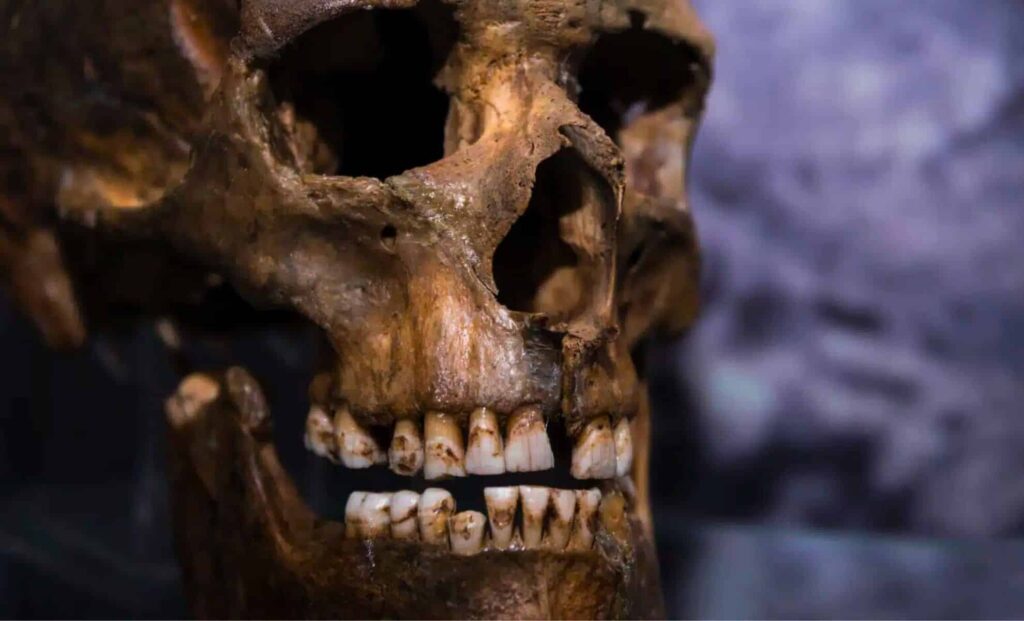In a new study published in the Journal of Human Evolution, a team of Chinese paleoanthropologists reports the discovery of 21 fossilized teeth in the Hualongdong cave in southeastern China. The remains, estimated to be about 300,000 years old, show an unexpected blend of archaic and modern human features, suggesting either an unknown human lineage or a complex case of ancient interbreeding.
The Hualongdong Site and What Makes It Unique
First excavated in 2006, Hualongdong has yielded the fossilized remains of at least 16 individuals dating to the Middle Pleistocene, a period critical to understanding human origins. Until now, most attention focused on partial skulls and postcranial bones. But with this latest analysis, researchers have turned to the teeth—and what they found defies classification.

“These teeth present a combination of characteristics so unusual that they challenge all existing evolutionary models,” said Dr. Xiu-Jie Wu, co-author of the study and a leading researcher at the Institute of Vertebrate Paleontology and Paleoanthropology (IVPP) in Beijing.
A Dental Paradox: Ancient Roots With Modern Crowns
What sets the Hualongdong teeth apart is their hybrid anatomy.
- On the one hand, the third molars (wisdom teeth) are remarkably small—a feature typically seen in modern humans and often linked to dietary shifts and jaw reduction.
- On the other hand, the roots of the molars are thick and strong, more similar to Homo erectus, an archaic human species that migrated into Asia as early as 1.7 million years ago.
This combination—modern in one aspect, primitive in another—is almost unheard of in the fossil record. “It’s as if the clock of evolution was running at different speeds in different parts of the body,” the authors noted in their analysis.
Skeletons Also Show a Mix of Traits
The teeth are not the only part of the Hualongdong fossils causing confusion. Earlier analyses of skeletal remains from the same site revealed facial structures similar to modern humans, including relatively flat faces and small jaws, but limb proportions and body frames that echo much earlier species.
In short, these individuals had modern faces but archaic bodies—and now, their teeth tell the same mixed story. This strengthens the case that Hualongdong hominins were not just another local variant of known species, but possibly something else entirely.
Three Competing Explanations: Lineage, Hybrid, or Drift?
To explain these unexpected traits, the researchers propose three main scenarios—each with different implications for how we understand human evolution in Asia.
- A new branch of the human tree
The population may represent a previously unrecognized species or offshoot closely related to modern humans, evolving in isolation in East Asia. This lineage would have branched off early from the Homo sapiens line, remaining distinct from Neanderthals or Denisovans. - Hybridization with Homo erectus
Alternatively, these traits could result from interbreeding between early modern humans arriving in the region and remnant Homo erectus populations that had been living in China for hundreds of thousands of years. - Selective pressure and genetic drift
A more conservative explanation is that local environmental conditions may have favored certain archaic traits, leading to genetic drift or even re-evolution of primitive features in an otherwise modern population.
None of these ideas can be confirmed without genomic evidence, but the study makes clear: Hualongdong humans cannot be easily categorized using current evolutionary models.
Asia’s Overlooked Role in the Human Story
Until recently, the narrative of human evolution has focused heavily on Africa and Europe. But findings like those at Hualongdong—and other recent discoveries like Homo luzonensis in the Philippines and Homo longi in northern China—underscore that Asia was not a passive transit zone.
Instead, the continent appears to have been a hotspot for evolutionary diversity, with multiple human lineages coexisting, interbreeding, and evolving in parallel for hundreds of thousands of years.
As the authors point out, “The simplistic tree of human evolution is being replaced by something more like a tangled bush.”

